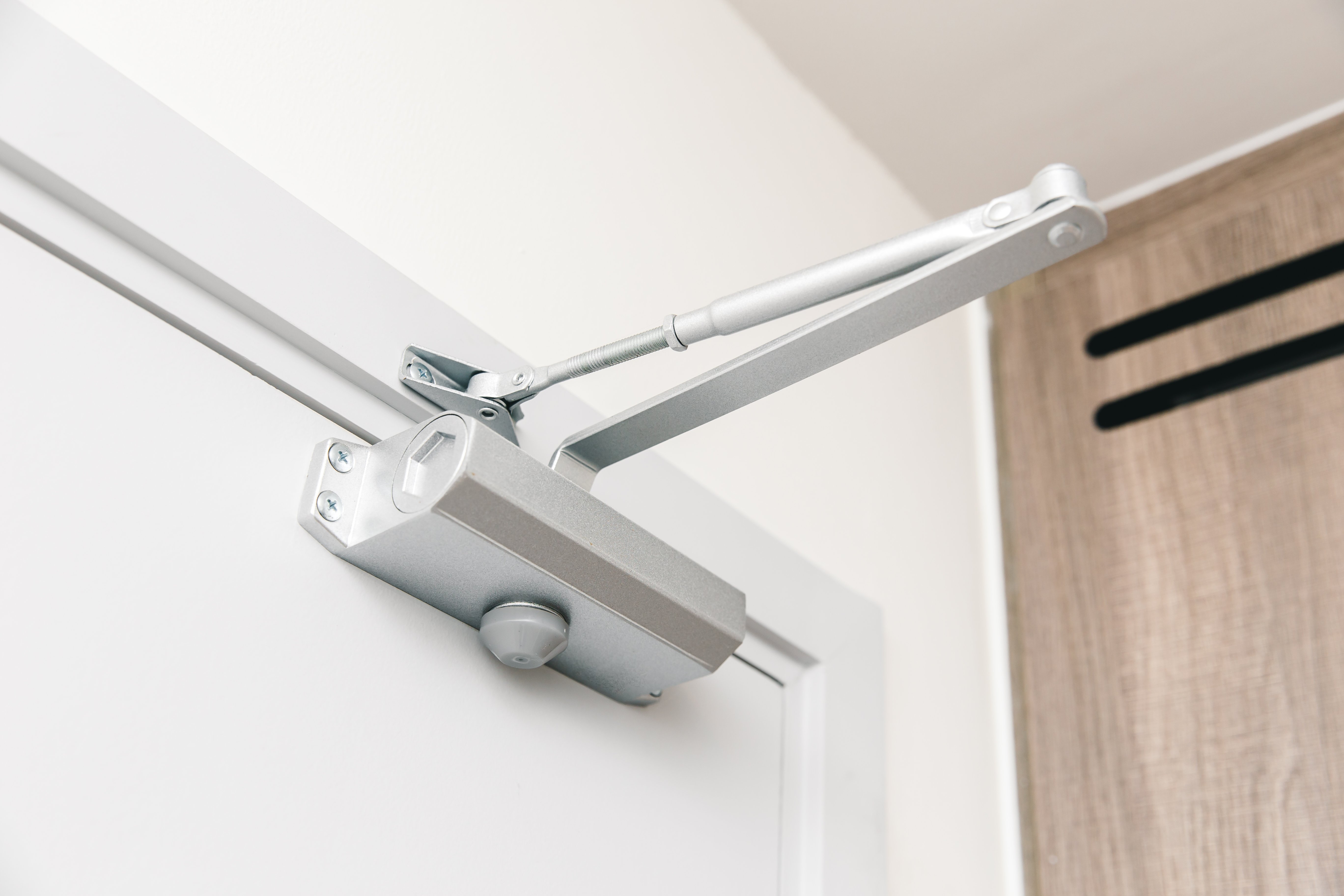FD30 Fire Doors: A Guide for UK Homeowners
Ensuring the safety of residents, in dwellings is extremely important especially when it comes to fire safety. One crucial aspect in prioritising their safety is installing fire doors. These doors are specifically designed with features that offer a level of protection against the spread of fire
This article aims to provide an understanding of fire doors including their definition, significance, notable features different types available and considerations for proper installation and maintenance. By delving into these aspects homeowners can make informed decisions when selecting the FD30 fire door for their homes.
What is an FD30 Fire Door
What exactly is an FD30 Fire Door? Well, it refers to a type of door that has undergone testing and certification to withstand fire for at least 30 minutes. These doors are engineered with materials and construction techniques to provide a level of resistance against the spread of fire within a building.
The number '30' in FD30 represents the duration in minutes that these doors can effectively withstand the passage of flames. By employing fire materials and construction methods they play a role, in building safety by containing fires and limiting their spread. This allows occupants to evacuate the building safely if needed.
These doors play a role in ensuring the safety of lives and properties during fire incidents by offering fire resistance.
Why are FD30 Fire Doors Essential for UK Homes?
FD30 fire-rated doors are essential for homes in the UK as they provide a level of protection against fires. These doors are designed to withstand fire for 30 minutes allowing occupants enough time to escape and emergency services to respond.
FD30 fire doors are crucial in preventing the spread of fire and smoke, minimising property damage and saving lives.
The table below highlights the features and advantages of fire doors;
|
Features |
Benefits |
|
Fire-resistant |
Prevents the spread of fire and smoke |
|
Intumescent seals |
Expands when exposed to heat, sealing gaps |
|
Solid core |
Provides structural integrity and stability |
|
Compliance with regulations |
Meets UK building regulations and fire safety standards |
Key Features of FD30 Fire Doors
FD30 fire doors, commonly found in homes across the UK are carefully designed to provide 30 minutes of vital protection, against fires. Here are some notable features;
Material & Construction; Typically made from timber, composite materials or a combination thereof these doors are strong and durable. Some may also include fire glazing.
Fire Resistance; As the name implies FD30 doors have the ability to withstand fire for a duration of 30 minutes. This crucially allows occupants time to evacuate and prevents the spread of fire.
Sealing & Fireproofing Elements; These doors are equipped with strips that expand during a fire sealing off any gaps, between the door and its frame. This effectively stops smoke and flames from passing

Certification; Authentic FD30 doors are accompanied by a certification label typically found on the side edge. This label confirms that they have been tested according to standards.
Thermal Insulation; In addition to their fire properties many FD30 doors also provide thermal insulation. This contributes to energy efficiency within homes.
Soundproofing; Certain types of FD30 doors offer insulation well making them particularly suitable for houses located in noisy areas or for rooms that require privacy.
Overall FD30 fire doors serve more than one purpose; they act as assets that enhance safety, energy efficiency and comfort in UK households.
Choosing the Right FD30 Fire Door for Your Home
Selecting the FD30 fire door entails considering not only safety but also ensuring it complements your home aesthetics and fulfils specific requirements. Here's a helpful guide for making a choice;
Aesthetics; There is a range of finishes available for FD30 doors ranging from classic timber designs to more modern options.
Consider selecting a fire door that complements your home's decor.

JMB400 Black Fire Rated Door Handle
Door Hardware; All fire doors need fire-rated door handles, hinges, door locks latches & door closers
Size & Fit; It's crucial to ensure the door fits snugly into your frame. A fitted door can compromise its ability to resist fire. While standard UK sizes are available you may need custom sizes, for frames.
Glazing Options; Some FD30 doors come with fire glazing allowing light while maintaining safety. You can decide if this feature suits your needs.
Material; Most FD30 doors are made of timber but there are also options that offer different finishes and potentially better sound or thermal insulation.
Certification; Always choose doors with certification labels, indicating they have been rigorously tested and meet the required standards.
Supplier Reputation; It is advisable to select suppliers known for their commitment to quality and adherence to UK regulations.
Types of FD30 Fire Doors;
FD30 fire doors come in types to cater to needs and preferences;
- Timber Doors; These doors are crafted entirely from wood providing a timeless appearance and robust fire resistance.
- Composite Fire Doors; Made from a combination of materials like timber, steel and PVCu these doors offer enhanced durability along with improvements, in insulation properties.
Glazed FD30 Doors; These doors feature glass panels that are resistant, to fire allowing natural light to pass through while ensuring safety. They are a choice for areas where you want to have sunlight.
Panelled Fire Doors; These doors do not provide safety. Also, add a touch of elegance with their decorative panels. They are quite popular among homeowners who value both aesthetics and security.
Flush Fire Doors; If you prefer a modern look these doors offer a surface without any interruptions. They give your space a modern appearance while still providing fire protection.
Double Fire Doors; When you have openings these doors come in handy as they consist of two FD30 doors that meet in the middle. With this design larger spaces can remain well protected against fire hazards.
When deciding which type of door to choose take into consideration factors such as the location of the door the style of your home and any specific functional needs like soundproofing or light control. While all types provide 30-minute fire resistance each offers its unique touch to enhance your space.
What is the difference between a fire-rated door and a normal door
What distinguishes fire-rated doors from doors? When comparing fire-rated doors to ones it's important to understand their differences in terms of their ability to withstand and contain fires. Here are four significant distinctions;

Normal Door
- Fire resistance rating; Fire-rated doors, such as FD30 fire doors undergo design and testing processes to ensure they can withstand fire for a designated period. Around 30 minutes.
Regular doors however lack a fire resistance rating. Are not designed to withstand fire.
Construction materials; Fire-rated doors are constructed using tested and proven materials such, as timber, steel or composite materials that offer a level of fire resistance. On the other hand, regular doors are typically made from fire-resistant materials like hollow core timber or PVC.
Seal and frame; Fire-rated doors come with intumescent seals and frames that expand when exposed to heat. This expansion forms a barrier against smoke and flames. Regular doors usually lack these seals and frames making them less effective in preventing the spread of fire.
Protection against property damage; Fire-rated doors significantly reduce property damage during a fire due to their ability to withstand flames. In contrast, regular doors can quickly succumb to heat and flames resulting in destruction.
Installation & and Maintenance Considerations for an FD30 Door
Installation and maintenance play a role in ensuring the effectiveness of an FD30 door during a fire emergency;
Professional Installation; It is essential to engage a certified installer for proper fitting because an improperly installed door can compromise its fire resistance. Make sure that gaps, between the door and frame fall within specified limits.
Intumescent Strips; Make sure to place these strips, which expand when exposed to heat around the edges or frame of the door. They play a role, in sealing the door during a fire.
Regular Checkups; It's important to inspect your door for any signs of wear or damage. Ensure that the seals are intact and that the door closes fully without any obstructions.
Maintenance; Keep your door clean by using soap and water-avoiding materials. For timber doors consider re varnishing or painting them every year to maintain their appearance and strength.
Hardware; Opt for fire-rated hardware such as hinges, locks and closers. Regularly check for components and Tighten them as needed.
Replacement; If your door shows signs of wear, damage or no longer fits snugly it may be time to consider replacing it.
Remember that the effectiveness of an FD30 door relies not on its construction but on its proper installation and regular maintenance. Giving it attention ensures that it remains a barrier against fires.
We offer a wide range of fire door hardware for commercial and residential to maintain the integrity and functionality of your FD30 door over time.
Frequently Asked Questions;
Can FD30 Fire Doors be used in buildings or are they only suitable for homes?
FD30 fire doors, with a fire resistance rating of 30 minutes can be installed in both buildings and residential homes. The suitability of FD30 fire doors will depend on the fire safety requirements of each building.
Are FD30 fire doors offered in a variety of materials and finishes to match the aesthetics of home styles?
Yes, fire doors are available, in materials. Finishes to complement various home styles. This allows for customisation and seamless integration with the design while still providing fire protection.
What are the testing standards and certifications that FD30 fire doors need to meet to ensure their effectiveness?
Ensuring the effectiveness of fire doors requires adherence to testing standards and obtaining appropriate certifications. These standards evaluate the door's ability to withstand fire for a duration while certifications indicate that the door meets all required safety criteria.
Are FD30 fire doors more expensive than doors? Is there any government assistance or funding available to help with the cost?
The literature does not address the cost comparison between fire doors and regular doors. Does it mention any government grants or funding options aimed at offsetting these costs? Further research is required to obtain this information.
Can existing doors be upgraded to meet FD30 fire door standards? Is it necessary to replace the door? It might be feasible to upgrade existing doors to meet the FD30 fire door standards. However, it is important to assess the condition of the door and consult a professional to determine if replacement is necessary.
Concluding Thoughts
In conclusion, FD30 fire doors, also referred to as fire-rated doors are a safety feature for homes in the UK. These doors are specifically designed to endure fire and prevent its spread thus safeguarding lives and property. Key characteristics of FD30 fire doors include their ability to withstand fire for up to 30 minutes their robust construction and their self-closing mechanism.
When selecting an FD30 fire door it is crucial to consider aspects such as material, size and certification. Proper installation and regular maintenance play a role, in ensuring the effectiveness of these doors in case of a fire.

